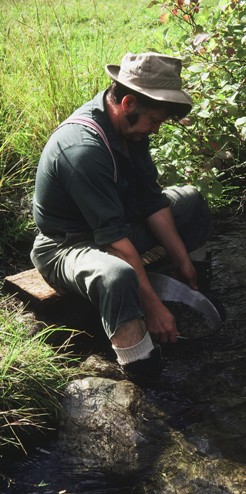
And why should the oil industry not seize this opportunity? True, pumping waste into long-term storage is not what we veteran frontier explorers are used to, with our techno-gambler culture of high risk and high reward (Figure 18). This would be a future service industry, with a price per tonne for all carbon safely stored. The dull psalm of duty would appear to replace the trill of pleasure - but that is to set the technical challenges too low. The reservoir geology and engineering involved are interesting enough to quicken the blood of skilled young people. The task could be tackled properly between now and 2050.
Closing circles
Geological evidence is implacable. Geological processes act over periods of time far removed from human experience. Messages from rocks, read correctly, should be heeded.
The Paleocene-Eocene Thermal Maximum (PETM) at 55Ma affected evolution to the point of defining the boundary of an Epoch. Though its significance appears reduced in comparison with the drama of the closely preceding Era-ending extinctions of dinosaurs and ammonites at 65 Ma, it was a time of major change in the evolution of mammals. There was another effect on mammals at the PETM, apart from the vicious change in climate. Thanks to uplift caused by the 55 Ma hot blob in the early Iceland hotspot, distant ancestors of the present-day thoroughbred racehorse were able to browse their way from one side of the nascent North Atlantic Ocean to the other over a land bridge (Hooker, 1996). So it seems appropriate that the headquarters of British racing is at Newmarket, where the gallops stretch out over the well-drained chalk downs, formed from ooze on the Cretaceous sea floor, and first lifted up to form Cambridgeshire and Suffolk as part of the development of the early Iceland hotspot.
Newmarket is less than an hour by internal combustion engine (rather than horse) from the Hertfordshire Puddingstone quarry where this tale began. The sediments that were eventually laid down on top of the puddingstone were muds – the London Clay, through which many of the capital’s tunnels are cut. From the hippo bones it contains we know that the climate of Bloomsbury was even steamier then than when the Woolfs lived there or geologists met to exchange North Sea secrets in 1974; yet it was already considerably cooler than during the warming of the PETM, 55 million years ago.
Is there a direct link between that intense heat, and that unusual rock, the Hertfordshire Puddingstone? We cannot be sure; we do not have in these rocks the stratigraphical precision achieved by Shackleton and others elsewhere. But silica is more soluble at higher temperatures (Pettijohn & others, 1987): one may speculate that the cement that bound pebble and sand together into the plough-smashing menace of Hertfordshire farmers was formed as a result of the PETM.
The circle closes. Heat from the Earth’s interior temporarily increased at the hotspot that marked the location of Iceland in the early North Atlantic. A pulse in mantle convection at 55Ma lifted Paleogene Scotland above the waves. Erosion poured sand onto its flanks. That sand, carried further offshore into the precursor of today’s North Sea, was finally covered and sealed by layers of mud. Later still it filled with oil from below. And there it waited until October 1970, when BP came along, and drilled exploration well 21/10-1.